Belarus’s Lukashenko becomes second only leader to visit Myanmar since coup
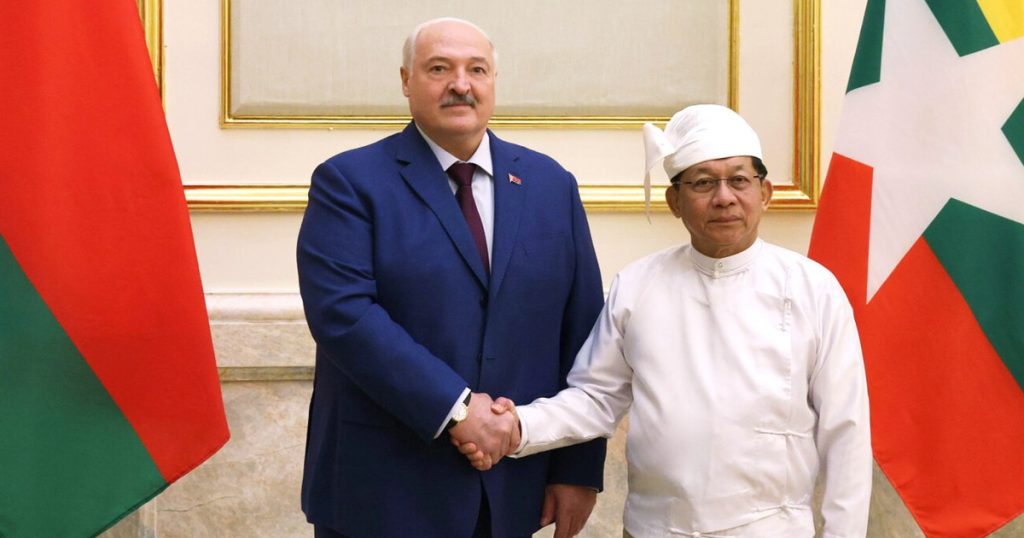
Alexander Lukashenko’s visit comes shortly before military government holds national polls widely condemned as a sham. Belarusian President Alexander Lukashenko has arrived in Myanmar on a goodwill visit seen as lending support to the Southeast Asian country’s military government in advance of a widely condemned national election set to be held next month. Myanmar state media reported on Friday that Senior General Min Aung Hlaing, the country’s self-installed de facto leader, met Lukashenko at the Presidential Palace in the capital, Naypyidaw. Recommended Stories list of 3 itemsend of list “This visit demonstrated Belarus’s goodwill and trust towards Myanmar and marked a historic occasion. It is the first time in 26 years of diplomatic relations that a Belarusian Head of State has visited Myanmar,” military run outlet The Global New Light of Myanmar reported. Lukashenko’s arrival at a military airport in Naypyidaw on Thursday night saw him welcomed by senior figures from Myanmar’s military government, including Prime Minister Nyo Saw, with full state honours and cultural performers. After former Cambodian Prime Minister Hun Sen, Lukashenko is only the second foreign leader to visit Myanmar since its military overthrew Aung San Suu Kyi’s democratically elected National League for Democracy (NLD) government in a coup on February 1, 2021. The Belarusian leader’s visit also comes just a month before the military is set to host national elections that many domestic and international observers have condemned as a sham. His visit is widely viewed as lending support to the polls, due to be held in late December, and which the military government has touted as a return to normalcy. Advertisement Following Lukashenko’s meeting with Min Aung Hlaing on Friday, The Global New Light also confirmed that Belarus plans to “send an observation team to Myanmar” to monitor the polls. The leaders also agreed that “collaboration will also be strengthened in military technologies and trade”, a day after the Myanmar-Belarus Development Cooperation Roadmap 2026–2028 was signed in Yangon. Belarus state media quoted Minister of Foreign Affairs Maxim Ryzhenkov as saying that Myanmar has “significant potential in various industrial sectors”, while Belarus has “expertise and modern technologies in mechanical engineering”. “Myanmar plans to mechanise its agriculture, and we in Belarus produce a complete lineup of machinery and equipment. As our president says, no topics are off limits for our cooperation,” Ryzhenkov said. Belarus’s government is widely regarded as authoritarian, with Lukashenko serving as the former Soviet state’s first and only president since the office was established in 1994. Along with major backers China and Russia, Belarus is one of the very few countries that have continued to engage with Myanmar’s military leaders since the coup. A popular protest movement in the immediate aftermath of the coup has since morphed into a years-long civil war, further weakening the Myanmar military’s control over the fractured country, where ethnic armed groups have fought decades-long wars for independence. Preparing for the polls, military government census takers in late 2024 were only able to count populations in 145 of Myanmar’s 330 townships – indicating the military now controls less than half the country. Other recent estimates place the military’s control as low as 21 percent of the country’s territory. Ethnic armed groups and the anti-regime People’s Defence Force – which have pledged to boycott and violently disrupt the upcoming polls – control approximately double that amount of territory. Amid geographic limitations and raging violence, as well as the Myanmar military’s March 2023 dissolution of Aung San Suu Kyi’s hugely popular NLD, critics have pointed to the absurdity of holding elections in such circumstances. Preparing for the polls, military leaders carried out a mass amnesty on Thursday, pardoning or dropping charges against 8,665 people imprisoned for opposing army governance. Adblock test (Why?)
Son of jailed Mexican drug lord ‘El Chapo’ to plead guilty in US court

Joaquin Guzman Lopez, one of four sons of the Sinaloa cartel’s ‘El Chapo’, changes his plea to guilty, court documents show. Published On 29 Nov 202529 Nov 2025 Click here to share on social media share2 Share A son of notorious Mexican drug lord Joaquin “El Chapo” Guzman will plead guilty next week in the United States to narcotics trafficking charges, according to federal court documents. Joaquin Guzman Lopez, one of four sons of the jailed Sinaloa cartel leader “El Chapo”, originally pleaded not guilty after his arrest in July 2024 in Texas. Recommended Stories list of 4 itemsend of list But federal documents released on Friday show that Guzman Lopez is to change his plea at a hearing set for Monday at the US District Court in Chicago. Another of his three brothers, Ovidio Guzman, as part of a plea deal struck in exchange for a reduced sentence, pleaded guilty in July 2025 to conspiracy related to drug trafficking and two counts of participating in the activities of a criminal enterprise. Ovidio Guzman also admitted that he and his brothers, known collectively as “Los Chapitos” (Little Chapos), had taken over their father’s operations within the cartel following his arrest in 2016. Mexican broadcaster MVS Noticias said Guzman Lopez’s guilty plea could mean “a new chapter in the history of drug trafficking is about to be written”. “This move has raised numerous questions about the possible ongoing negotiations between him and US authorities,” the news outlet said. The ABC 7 Chicago news channel said federal prosecutors have said they will not now seek the death sentence for Guzman Lopez, and that there “is talk of a plea deal now in the works”. He is due to appear in court in Chicago at 1:30pm (19:30 GMT) on Monday. Two other “Chapitos” brothers, Ivan Archivaldo Guzman Salazar and Jesus Alfredo Guzman Salazar, have also been indicted on drug trafficking charges in the US but remain at large. Advertisement Their 68-year-old father, “El Chapo”, is serving a life sentence at a supermax federal prison in Colorado following his arrest and conviction in 2019. Guzman Lopez was taken into custody last year when he arrived in Texas on board a small private plane, along with the cofounder of the Sinaloa cartel, Ismael “Mayo” Zambada. Zambada claimed to have been misled about the destination and that he was abducted by Guzman Lopez to be handed over against his will to authorities in the US. Following the arrest, clashes intensified between two factions of the Sinaloa cartel, headed, respectively, by the “Los Chapitos” brothers and Zambada. The infighting led to approximately 1,200 deaths in Mexico and about 1,400 disappearances, according to official figures. Officials in the US accuse the Sinaloa cartel of trafficking fentanyl to the country, where the synthetic drug has caused tens of thousands of overdose deaths in recent years, straining relations with Mexico. The cartel is also one of six Mexican drug-trafficking groups that US President Donald Trump has designated as global terrorist organisations. Additional sanctions against the two fugitive “Los Chapitos” brothers were announced by Washington in June for fentanyl trafficking, and the reward for their capture was increased to $10m each. Adblock test (Why?)
Jordan demands Russia stop recruiting citizens after two killed in fighting
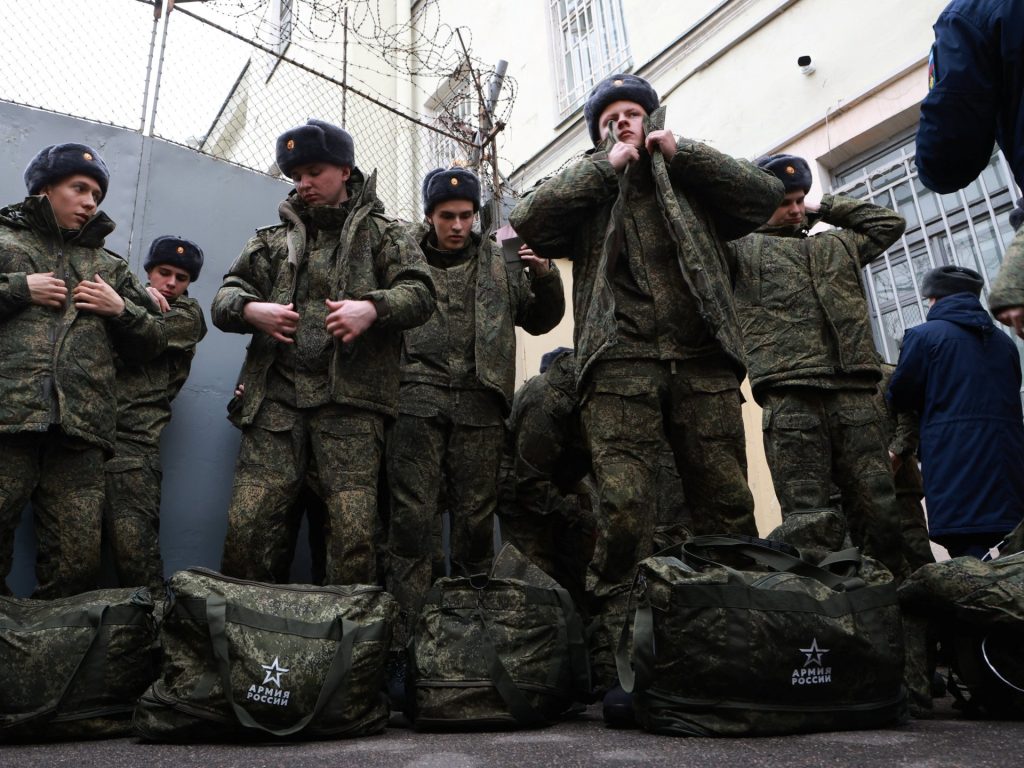
Aman says it will take ‘all available measures’ to stop Russian authorities from recruiting its citizens to fight in war. Published On 28 Nov 202528 Nov 2025 Click here to share on social media share2 Share Jordan has demanded that Russian authorities stop illegally recruiting its citizens after two Jordanians were killed fighting in the Russian military. Jordan’s Ministry of Foreign Affairs issued the warning on Thursday against Moscow and external “entities” working online to recruit people on Moscow’s behalf. Recommended Stories list of 4 itemsend of list The ministry did not mention Russia’s almost four-year-long war on Ukraine, where thousands of paid foreign fighters have joined Moscow’s side. In a statement shared on X, the Jordanian Foreign Ministry said it would “take all available measures” to end the further recruitment of Jordanians and called for Moscow to terminate the contracts of its currently enlisted citizens. The recruitment is a violation of both Jordanian domestic and international law, the ministry said, and “endangers the lives of [its] citizens”. The statement did not provide any further identifying information or say where or when the two citizens were killed, though Russia has a track record of recruiting foreigners to fight in Ukraine. Ukraine says Moscow has recruited at least 18,000 foreign fighters from 128 countries, according to figures shared by Brigadier General Dmytro Usov. In a post on the Telegram messaging app, he said another 3,388 foreigners have died fighting for Russia. Usov did not provide a breakdown of the foreign soldiers fighting in Ukraine for Russia, but the vast majority were likely from North Korea. The New York-based Council on Foreign Relations said Pyongyang sent between 14,000 and 15,000 soldiers to fight for Russia in 2024, citing Western officials. Advertisement Moscow has also recruited at least 1,400 Africans from more than 30 countries, using methods ranging from deception to duress, according to Ukrainian Minister of Foreign Affairs Andrii Sybiha. Sybiha said previously that signing a contract with the Russian military was “equivalent to signing a death sentence” for foreign recruits. “Foreign citizens in the Russian army have a sad fate. Most of them are immediately sent to the so-called ‘meat assaults,’ where they are quickly killed,” Sybiha said in a November 9 post on X. “The Russian command understands that there will be no accountability for the killed foreigner, so they are treated as second-rate, expendable human material,” he said. Adblock test (Why?)
Trump says US will stop Venezuelan drug trafficking ‘by land’ soon

President Trump claims attacks on vessels in the Latin American region have stopped 85 percent of drugs trafficked by sea to US. Published On 28 Nov 202528 Nov 2025 Click here to share on social media share2 Share The United States will start targeting Venezuelan drug trafficking “by land”, US President Donald Trump has said, in the latest escalation in tension with Caracas, which has accused Washington of planning to topple Venezuelan President Nicolas Maduro. Trump’s announcement on Thursday follows weeks of US forces deploying to the Latin American region, including an aircraft carrier group, stealth fighter jets and thousands of troops, as Washington’s attacks on so-called drug trafficking vessels have killed dozens of people in international waters. Recommended Stories list of 4 itemsend of list “You really are the backbone of America’s airpower, and in recent weeks, you’ve been working to deter Venezuelan drug traffickers, of which there are many,” Trump said in a Thanksgiving holiday video address to US forces. “Of course, there aren’t too many coming in by sea any more,” Trump said. “People aren’t wanting to be delivering by sea, and we’ll be starting to stop them by land also. “The land is easier, but that’s going to start very soon. We warned them. Stop sending poison to our country. “But we’re going to take care of that situation. We’re already doing a lot. We’ve almost stopped it. It’s about 85 percent stopped by sea,” the US president added. The US military has carried out more than 20 strikes on vessels in the Caribbean Sea and Pacific Ocean since September, killing at least 83 people. Legal experts and governments in Latin America have branded the campaign of attacks as extrajudicial killings. Washington has provided no evidence to support its allegations that the vessels attacked were involved in drug trafficking, and regional leaders say the attacks have killed mostly fishermen. Advertisement Trump had previously warned of potential military action against sites in Venezuela and has claimed that Maduro and senior members of the Venezuelan government are involved in the drug trade. Officials in Caracas say the US is using drug trafficking as a pretence to launch military action to topple Maduro and carry out “regime change” in Venezuela. Speaking on Thursday, Maduro said Venezuelans would not be intimidated, despite weeks of US threats. “For 17 weeks, foreign and imperialist forces have been continuously threatening to disrupt the peace of the Caribbean Sea, South America, and Venezuela under false and extravagant arguments that no one believes, neither in US public opinion, nor in world public opinion, and even less so in the powerful Venezuelan public opinion,” he said. “Today, we say that in Venezuela, there is no threat or aggression that frightens our people or takes us by surprise,” Maduro said in his speech broadcast on national television. “Our people have prepared themselves with imperturbable serenity to defend their homeland, their soil, their seas, their sky, their soul, and their history,” he added. Adblock test (Why?)
Putin says he is ready to guarantee in writing no Russian attack on Europe
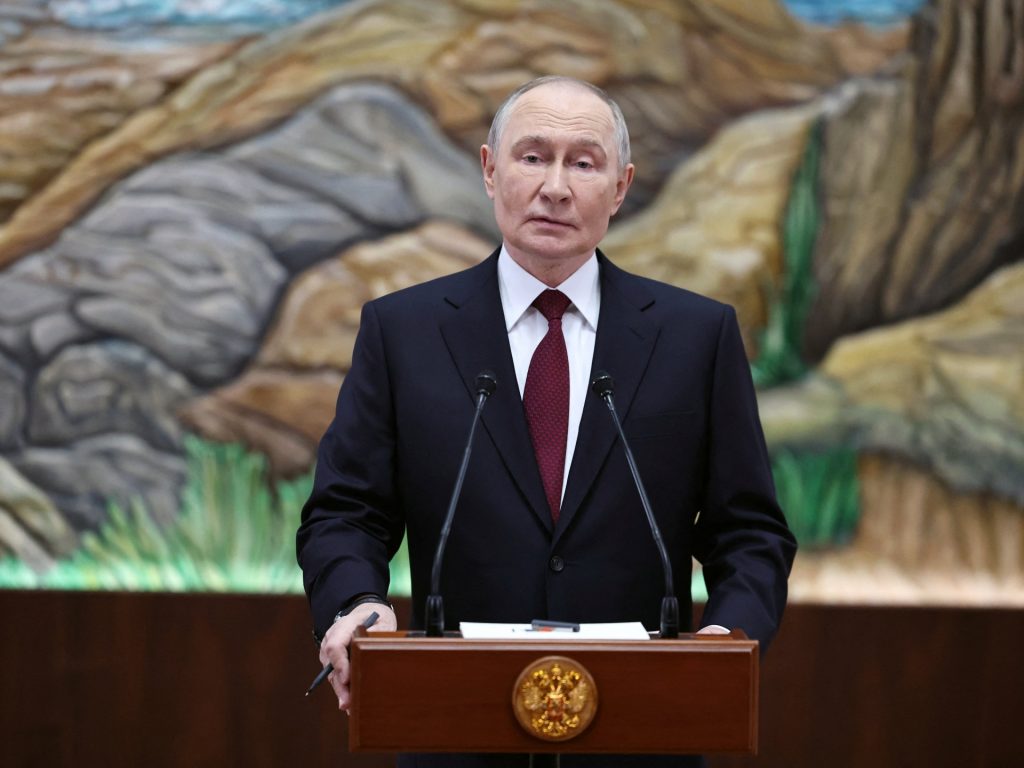
President Vladimir Putin has said he is ready to guarantee in writing that Russia will not attack another European nation, as he dismissed claims that Moscow intends to invade another country as a “lie” and “complete nonsense”. Speaking on Thursday in Kyrgyzstan’s capital, Bishkek – where he attended a summit of the Collective Security Treaty Organisation (CSTO), a Russia-led military alliance that includes some former Soviet republics – Putin branded claims Moscow is planning to attack Europe as “ridiculous”. Recommended Stories list of 3 itemsend of list “The truth is, we never intended to do that. But if they want to hear it from us, well, then we’ll document it. No question,” the Russian president told reporters. Putin’s denials that Moscow is planning another invasion have been met with scepticism from European leaders, who point to the fact that he repeatedly denied Russia would invade Ukraine before doing so in February 2022. Responding to questions about efforts to end the war in Ukraine, Putin expressed optimism about a draft United States-backed peace plan, saying it could serve as the “basis for future agreements”. While Putin said Russia is ready for a “serious” discussion to end the war, he also warned that Moscow was prepared to fight on if necessary and take over more of Ukraine. A basic prerequisite to end the fighting, he reiterated, was that Ukrainian troops withdraw from Donetsk and Luhansk in eastern Ukraine’s Donbas region, including leaving areas that Russian troops do not currently control. “Ukrainian troops must withdraw from the territories they currently hold – then the fighting will stop. If they do not pull back, we will achieve this by military means,” he said. Advertisement Ukraine has said that such a withdrawal would leave the way open for a Russian assault on its capital, Kyiv. ‘The president has lost his legitimate status’ Putin also suggested that he was open to a negotiated settlement with Kyiv, but once again branded Ukrainian President Volodymyr Zelenskyy’s government illegitimate, adding that it was “legally impossible” to sign any agreements with them. “Broadly speaking, of course, we ultimately want to reach an agreement with Ukraine. But right now, this is practically impossible,” Putin said, repeating previous unfounded claims that Kyiv had lost the right to govern after failing to hold elections when Zelenskyy’s presidential term expired in May 2024. “The Ukrainian leadership made a fundamental strategic mistake when it feared presidential elections, because since then, the president has lost his legitimate status,” Putin added. Kyiv has maintained it could not hold elections while under martial law and defending its territory against Russian attacks. In February, lawmakers in Ukraine’s parliament overwhelmingly approved a resolution affirming Zelenskyy’s legitimacy to stay in office. Putin also claimed that, due to the Zelenskyy government’s purported illegitimacy, any peace deal must be recognised by the international community, and that the international community must also recognise Russian gains in Ukraine. The Ukrainian president’s chief of staff, Andriy Yermak, reiterated on Thursday that Zelenskyy “will not sign away territory”. “As long as Zelenskyy is president, no one should count on us giving up territory,” Yermak told US magazine The Atlantic. Last week, the US revealed a 28-point peace plan for Ukraine that was widely viewed as extremely favourable to Russia. It called for Kyiv to make major concessions, including ceding territory and abandoning its NATO ambitions. The plan has since been altered with Ukrainian input, Ukrainian First Deputy Foreign Minister Sergiy Kyslytsya said, nixing a 600,000-member cap on Ukraine’s army and a general war crimes amnesty. On Thursday, Zelenskyy said Ukrainian delegations are set to meet with Washington officials to work out a formula discussed at previous talks in Geneva to bring peace and provide security guarantees for Kyiv. He added, without providing details, that there would be further talks next week. US representatives, including Trump’s special envoy, Steve Witkoff, are also set to travel to Moscow next week to continue discussions on key issues, including security guarantees for Ukraine and Europe. Advertisement Putin said his delegation intends to raise its own “key issue” with the US delegation, specifically a passage in the peace plan stating that Washington only intends to recognise Russia’s de facto control over Crimea and other Ukrainian territory, which Moscow claims as its own. “That is precisely what our talks with the American side will be about,” Putin said. Adblock test (Why?)
US teen Mohammed Ibrahim released from Israeli prison after nine months
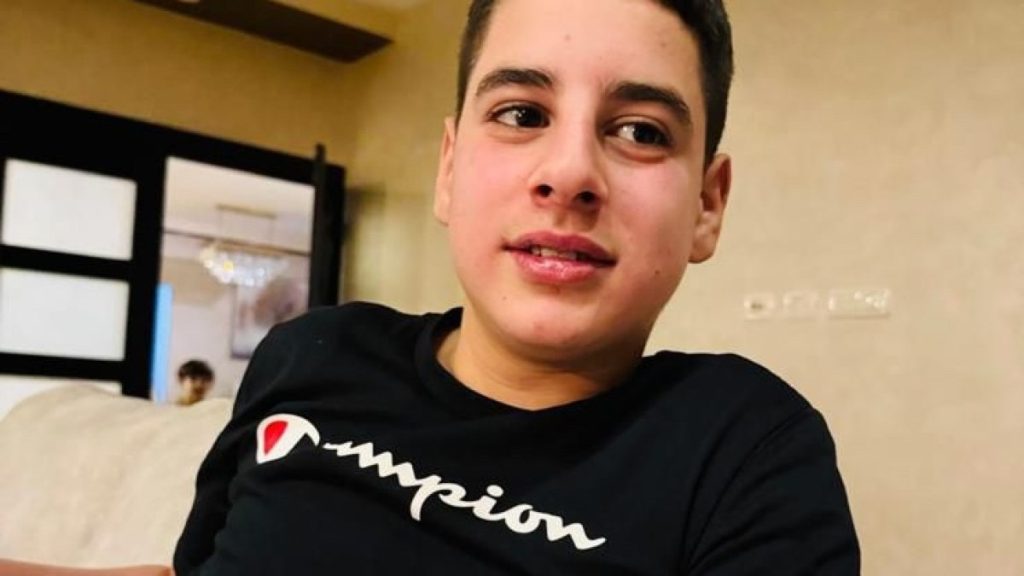
Advocates say the 16-year-old’s health had been in decline since his arrest in February for allegedly throwing rocks. Published On 27 Nov 202527 Nov 2025 Click here to share on social media share2 Share Israeli authorities have freed Palestinian American teenager Mohammed Ibrahim after more than nine months of detention, in a case that advocates say embodies Israeli abuses against Palestinians in the occupied West Bank. Mohammed’s release on Thursday came after a months-long pressure campaign from United States lawmakers and civil rights groups. Recommended Stories list of 3 itemsend of list The teenager from Florida was 15 years old in February when he was arrested and taken from his family home in the town of al-Mazraa ash-Sharqiya, near Ramallah. He turned 16 while being held in Israeli jail, where he drastically lost weight and contracted a skin infection. “Words can’t describe the immense relief we have as a family right now, to have Mohammed in his parents’ arms,” Mohammed’s uncle Zeyad Kadur said in a statement. “We couldn’t believe Mohammed was free until his parents wrapped their arms around him and felt him safe.” Mohammed was arrested over allegations that he threw rocks at Israeli settlers, which he denied. His father, Zaher Ibrahim and other relatives told Al Jazeera earlier this year that Mohammed was blindfolded and beaten during February’s raid on his family home. Israeli authorities did not allow him to contact his family while in prison, nor did he have any visitation rights. The only updates his loved ones were receiving were through US officials, who were granted access to Mohammed. Throughout his detention, his family members pleaded with the administration of US President Donald Trump to push for his release — or at least ensure that he had access to adequate food and healthcare. Advertisement “Israeli soldiers had no right to take Mohammed from us in the first place,” Kadur said in Thursday’s statement. “For more than 9 months, our family has been living a horrific and endless nightmare, particularly Mohammed’s mother and father, who haven’t been able to see or touch their youngest child for nearly a year, all while knowing Israeli soldiers were beating him and starving him.” The pressure campaign to release Mohammed intensified over the past few weeks amid reports that his health was deteriorating. Last month, 27 US lawmakers joined a letter urging the Trump administration to push Israel to free him. Individual legislators, most prominently Democratic Senator Chris Van Hollen, have also been raising awareness for the case and demanding Mohammed’s release. Thursday’s statement thanked those who pushed for Mohammed’s release and said the family plans to celebrate his freedom by celebrating the teenager’s 16th birthday belatedly, with his mother Muna serving his favourite meal. “No mother, father, parent, brother, sister, aunt, uncle, or child should ever have to go through what Mohammed just went through,” Kadur wrote. Adblock test (Why?)
The numbers behind UN report on women and girls killed
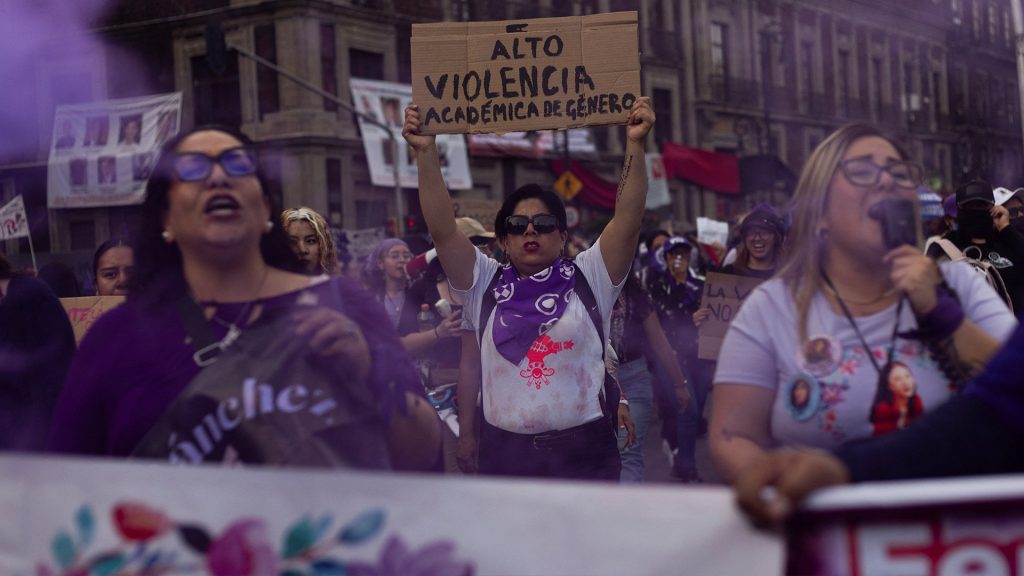
NewsFeed A UN report has found that at least 83,000 women and girls were intentionally killed last year, about 1 every six minutes. Al Jazeera’s Soraya Lennie breaks down the numbers. Published On 27 Nov 202527 Nov 2025 Click here to share on social media share2 Share Adblock test (Why?)
Tunisia frees prominent lawyer and critic of President Saied
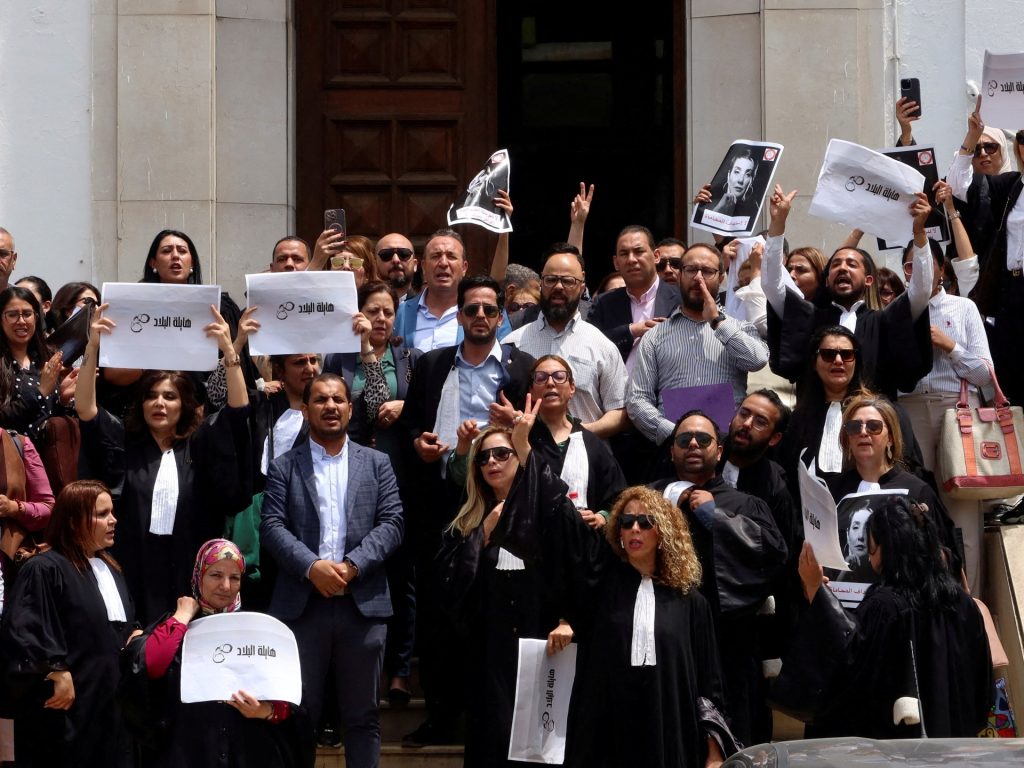
Sonia Dahmani, arrested in 2024 after questioning government policy on African refugees and migrants, says she hopes her release will mark end of ‘nightmare’ for herself and other prisoners. Published On 27 Nov 202527 Nov 2025 Click here to share on social media share2 Share Tunisia has freed prominent lawyer Sonia Dahmani, a vocal critic of President Kais Saied, after a year and a half in prison. Dahmani, who is also a media commentator, is widely seen as a leading dissenting voice in Tunisia, and her arrest prompted local protests demanding her release and international criticism. She was convicted over comments during a television appearance that questioned the government’s stance on undocumented African refugees and migrants in Tunisia. When asked whether they would try to stay and “conquer” Tunisia, Dahmani said: “What kind of extraordinary country are we talking about? The one that half of its youth want to leave?” A court said the comments had insulted Tunisia and spread false information intended to harm it. As Dahmani was released from a prison in Manouba near Tunis, dozens of her family members and activists chanted: “The police state’s era of repression is over.” She told reporters, “I hope this is the end of the nightmare for me and all the other prisoners.” Her lawyer Sami Ben Ghazi said the justice minister had issued a release order under a system that enables prisoners to apply for release after serving half their sentences. The National Syndicate of Tunisian Journalists welcomed Dahmani’s release and called for the release of other detained journalists. International and local rights groups said Dahmani’s imprisonment last year marked a deepening crackdown on dissent in the North African country. During a sweeping power grab in July 2021, Saied suspended parliament and expanded executive power so he could rule by decree. Since then, the president has jailed many of his critics. Advertisement Many of the powers that Saied had taken for himself were later enshrined in a new constitution, ratified in a widely boycotted 2022 referendum, while media figures and lawyers critical of Saied have been prosecuted and detained under a harsh “fake news” law enacted that same year. Saied says his actions are legal and aimed at ending years of chaos and rampant corruption. Widespread crackdown Amnesty International said this month that a crackdown on rights groups has reached critical levels with arbitrary arrests, detentions, asset freezes, banking restrictions and suspensions targeting 14 NGOs. Human Rights Watch said more than 50 people, including politicians, lawyers, journalists and activists, have been subjected to arbitrary arrest or prosecution since late 2022 for exercising their rights to freedom of expression, peaceful assembly and political activity. Early in Saied’s tenure, his government focused its crackdown on the Ennahdha Party. Tunisian courts have handed several jail sentences to Ennahdha’s leader, former Parliament Speaker Rached Ghannouchi, in cases that his supporters said are politically motivated. Even Saied’s former allies have not been spared in the crackdown. Nadia Akacha, the Tunisian president’s former chief of staff, who was considered one of his closest and most influential aides, was sentenced to 35 years in prison in absentia in July. Adblock test (Why?)
Pope Leo to travel to Turkiye, Lebanon on first foreign trip

NewsFeed Pope Leo XIV spoke about his upcoming first foreign trip as pontiff, a day before he is set to depart to Turkiye and Lebanon “to visit the beloved peoples of those countries rich in history and spirituality”. Published On 26 Nov 202526 Nov 2025 Click here to share on social media share2 Share Adblock test (Why?)
Georgia judge drops election interference case against Trump
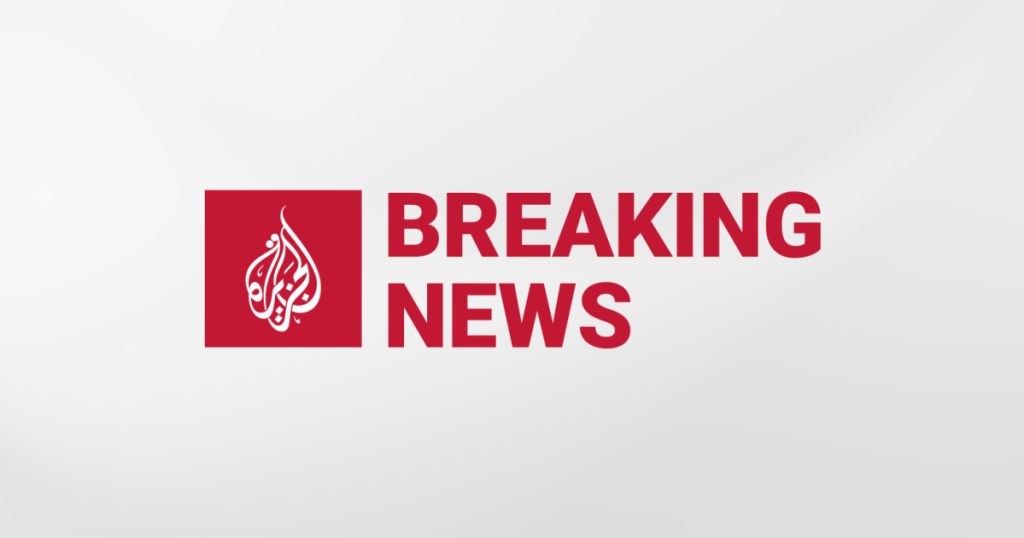
BREAKINGBREAKING, Judge Scott McAfee in the southern state of Georgia rules that the case against Trump ‘is hereby dismissed in its entirety’. Published On 26 Nov 202526 Nov 2025 Click here to share on social media share2 Share A Georgia prosecutor has dropped pending charges against Donald Trump over allegations of 2020 election interference by the United States president and his allies. Judge Scott McAfee granted the request to terminate the prosecution on Wednesday, putting an end to the last set of criminal charges against Trump. Recommended Stories list of 3 itemsend of list “This case is hereby dismissed in its entirety,” McAfee wrote. Trump faced four indictments in 2024, while he was out of office. Only one of the cases, in New York, proceeded to a trial. He was found guilty of falsifying business records in relation to a hush money payment to an adult film actress and sentenced to “unconditional discharge”, escaping any penalty like fines, probation or jail time. Two sets of federal charges against him — one over allegations of election meddling and another containing accusations of mishandling secret government documents — were dropped after Trump was re-elected president in November of last year. The prosecution in the Georgia case had already faced a setback when Fulton County District Attorney Fani Willis was disqualified from the case for having a romantic relationship with one of her top deputies. The case in Georgia centred on a call by Trump with the state’s top election official Brad Raffensperger after the 2020 vote in which he said he wants to “find 11,780 votes” to overturn the election. Trump had rejected the victory of his would-be successor, former President Joe Biden, falsely alleging that widespread voter fraud was behind the results. Advertisement In 2023, Willis charged Trump and 16 of his allies who challenged the election result in the state with racketeering and a string of crimes related to the vote. The US president – who made a stunning come back to the White House earlier this year – has always denied any wrongdoing in the cases against him, calling them a politically motivated “witch hunt”. This is a breaking news story. More details to come… Adblock test (Why?)

